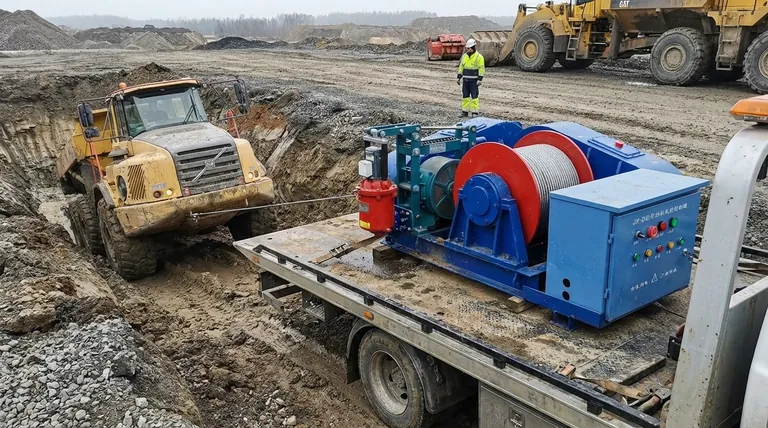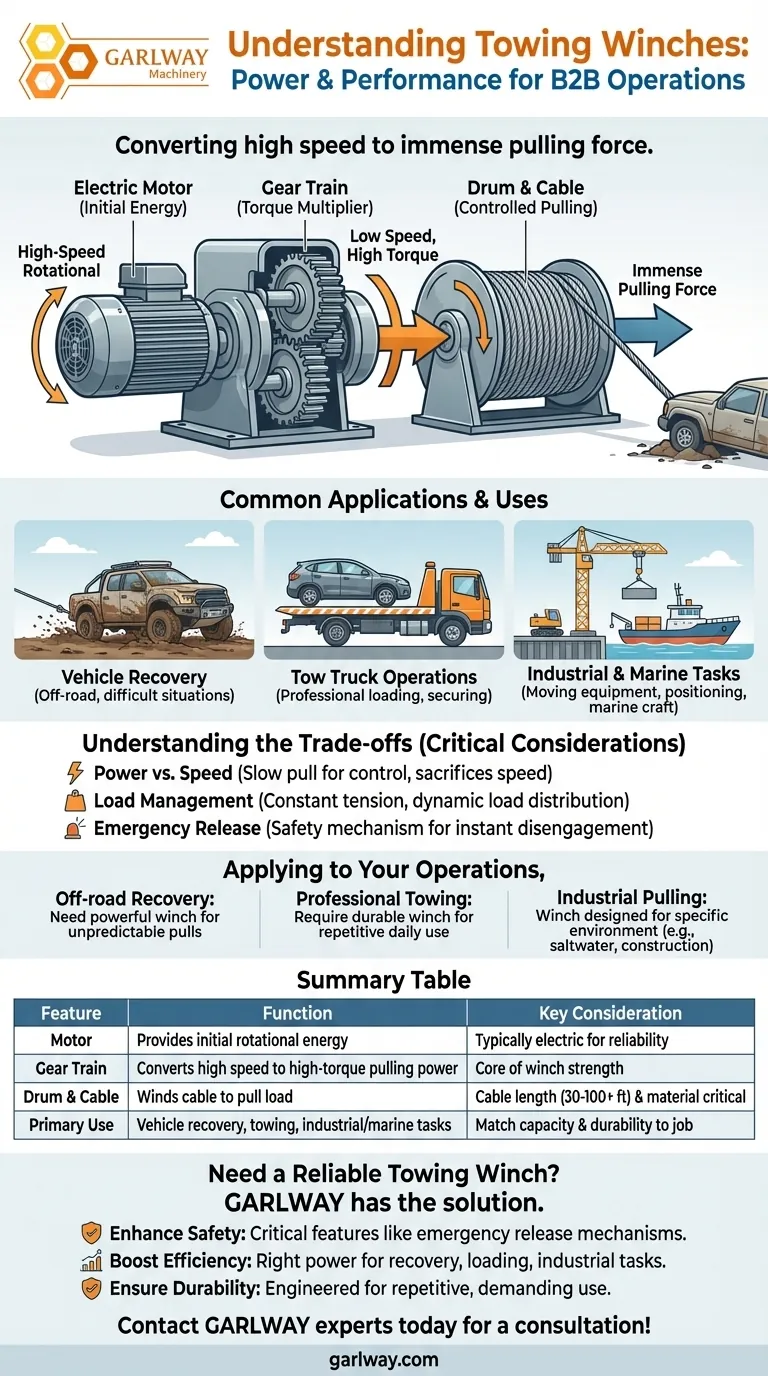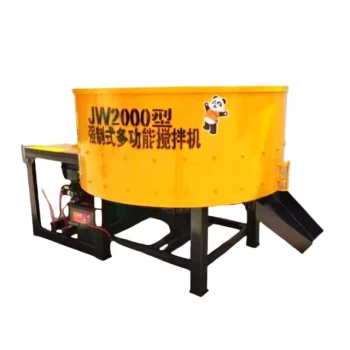At its core, a towing winch is a powerful mechanical device designed to pull heavy objects by winding a steel cable or synthetic rope around a rotating drum. It uses a motor and a gear system to generate immense pulling force, enabling it to move vehicles and other heavy loads that would otherwise be immovable.
A winch isn't just about reeling in a cable; its true function is to convert the high speed of a motor into low-speed, high-torque pulling power. This force multiplication is what allows it to rescue a stuck vehicle or load it onto a tow truck.

How a Winch Generates Its Power
A towing winch operates on a simple yet effective principle of mechanical advantage. Several key components work together to create the necessary force.
The Motor
The process starts with the motor, which is typically electric. This motor provides the initial rotational energy, but on its own, it doesn't have the strength to pull a heavy vehicle.
The Gear Train
This is the heart of the winch's power. The gear train takes the high-speed, low-power rotation from the motor and transforms it into low-speed, high-power (high-torque) rotation. This is what gives the winch its incredible pulling strength.
The Drum and Cable
The gear train turns the drum, which is the cylinder that the steel wire or rope is wrapped around. As the drum rotates, it winds the cable, pulling the attached object with steady and controlled tension. Winch cables can range in length, often from 30 to over 100 feet.
Common Applications and Uses
While most associated with vehicle recovery, towing winches are versatile tools used across several industries.
Vehicle Recovery
The most common use is pulling a vehicle out of a difficult situation. This includes extracting a car or truck that is stuck in mud, snow, or a ditch.
Tow Truck Operations
Tow winches are essential for professional towing services. They are used to pull vehicles onto the flatbed of a platform tow truck or to secure them in the sling of a drag-style tow truck.
Industrial and Marine Tasks
Beyond roadside assistance, these powerful devices are used to move construction equipment, pull aircraft, position drilling equipment, and are a standard feature on many fishing boats and marine craft.
Understanding the Trade-offs
While incredibly powerful, the design of a towing winch involves specific compromises that are critical to its function and safety.
Power Comes at the Cost of Speed
The gear train that creates immense pulling power does so by sacrificing speed. A winch pulls its load very slowly, which is a necessary feature for maintaining control and safety during a recovery operation.
Load Management is Critical
A winch must maintain steady tension on the line to be effective. The entire system is designed to transmit the full dynamic load of the tow directly to the vehicle's hull or frame.
Emergency Release is a Key Safety Feature
Because of the immense forces involved, a quality towing winch must also have a mechanism to release the line instantly in an emergency. This prevents catastrophic failure if the load shifts or exceeds the winch's capacity.
Applying This to the Task at Hand
Understanding the winch's function helps clarify which features are most important for a given job.
- If your primary focus is off-road recovery: You need a winch powerful enough to pull your vehicle's weight out of unpredictable situations like deep mud or steep inclines.
- If your primary focus is professional towing: You require a durable, reliable winch designed for repetitive daily use in loading vehicles onto a truck bed safely and efficiently.
- If your primary focus is industrial pulling: The winch must be specifically designed for the environment, whether it's the corrosive saltwater of the ocean or the demands of a construction site.
Ultimately, a towing winch is a specialized tool that provides controlled power to solve the fundamental problem of moving a very heavy object safely.
Summary Table:
| Feature | Function | Key Consideration |
|---|---|---|
| Motor | Provides initial rotational energy | Typically electric for reliability |
| Gear Train | Converts high speed to high-torque pulling power | This is the core of the winch's strength |
| Drum & Cable | Winds the cable to pull the load | Cable length (30-100+ ft) and material are critical |
| Primary Use | Vehicle recovery, towing, industrial/marine tasks | Match the winch's capacity and durability to the job |
Need a Reliable Towing Winch for Your Operations?
Whether you're a contractor needing to move heavy equipment or a towing service requiring dependable daily performance, GARLWAY has the solution. We specialize in robust construction machinery, including powerful winches designed for the toughest jobs.
We help you:
- Enhance Safety: Our winches are built with critical safety features like emergency release mechanisms.
- Boost Efficiency: Get the right pulling power for vehicle recovery, loading, or industrial tasks.
- Ensure Durability: Engineered for repetitive use in demanding environments.
Let's find the perfect winch for your specific needs. Contact our experts today for a consultation!
Visual Guide

Related Products
- Best 18000 Pound Drum Anchor Trailer Winch
- Electric and Hydraulic Winch for Heavy Duty Applications
- Electric Hoist Winch Boat Anchor Windlass for Marine Applications
- Warn Winch Windlass Boat Trailer Winch
- 12000 lb Heavy Duty Electric Boat Winch
People Also Ask
- What is a trailer winch used for? Achieve Safe, Effortless Heavy Load Transport
- How does the cable system work in trailer winches? Unlock the Mechanics for Safe & Powerful Pulling
- How are trailer winches rated? A Guide to Safe & Effective Load Capacity
- What is the significance of trailer winches in the boating industry? Ensure Safe and Efficient Boat Recovery
- How are trailer winch sizes determined? Match Capacity to Your Boat's Weight for Safe Loading

















